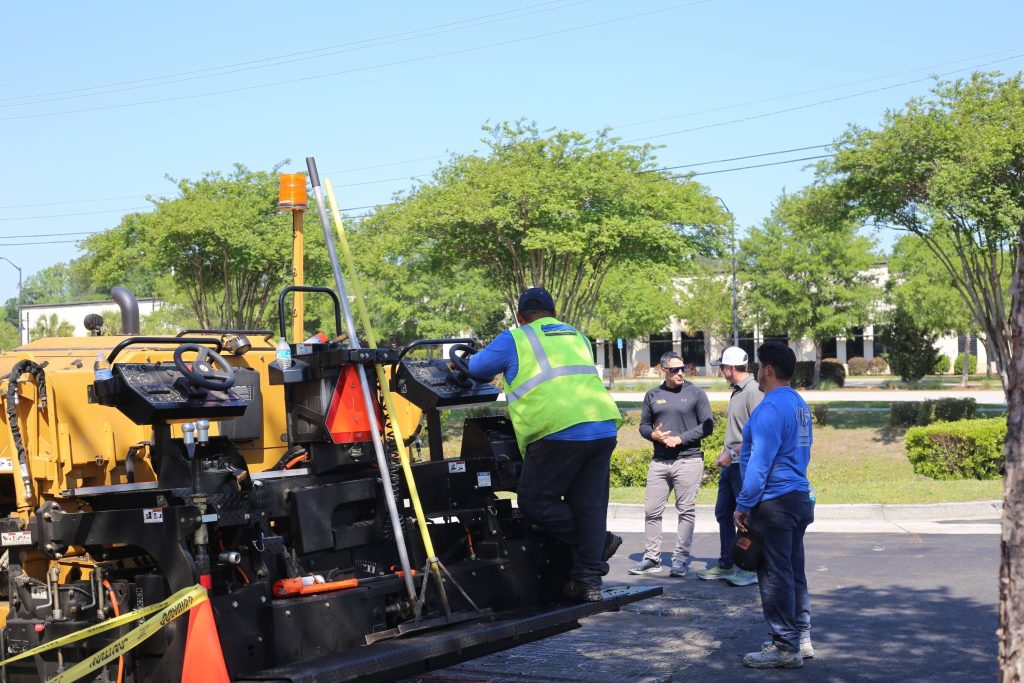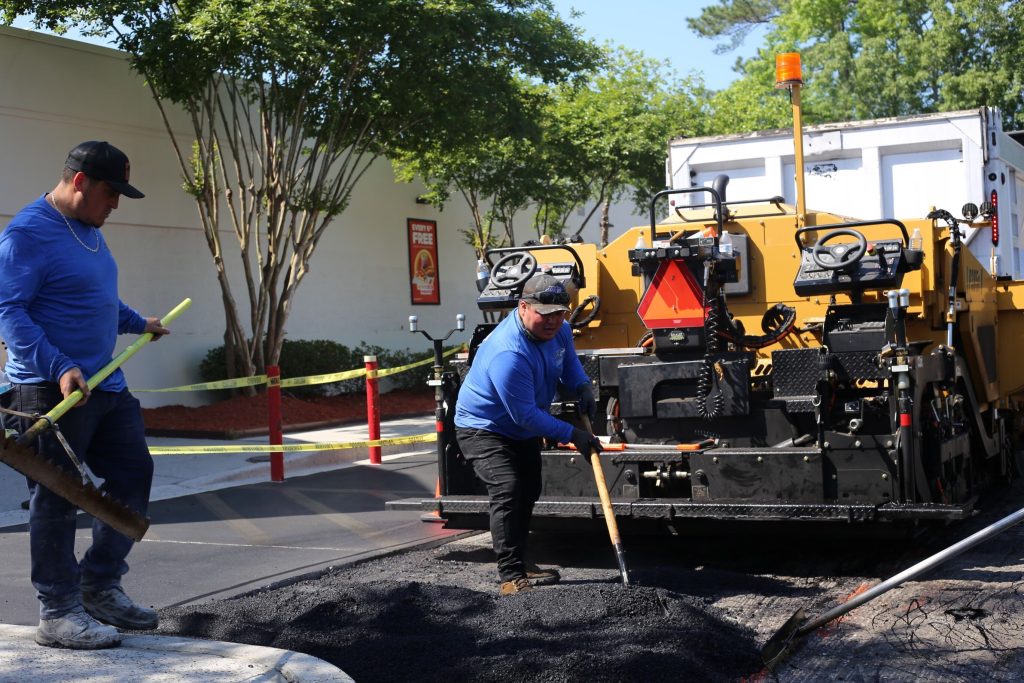Proper drainage is essential for the longevity and functionality of your asphalt pavement. Whether you’re managing a commercial parking lot, roadways, or other paved surfaces, drainage problems can lead to costly repairs and serious damage if not addressed in time. In this post, we’ll explore how to identify drainage issues in asphalt, the common causes, and the best ways to fix them before they escalate.
Why Drainage Matters for Asphalt Pavement
Water is one of the most damaging forces to asphalt. When water is allowed to pool on or under asphalt surfaces, it can lead to cracking, potholes, and even complete pavement failure. If left untreated, these issues can compromise the structural integrity of your commercial pavement, leading to unsafe driving conditions and expensive repairs.
Proper drainage ensures that water moves off the surface and away from the pavement’s base, preventing it from seeping into cracks and eroding the foundation. It also helps prevent the formation of urban heat islands in commercial areas, improving comfort and safety.
Signs of Asphalt Drainage Issues
- Standing Water
If you notice standing water after a rainstorm, it’s a clear sign that your asphalt is not draining properly. This issue can lead to puddles that cause further damage to the asphalt surface. - Cracks and Potholes
Water infiltration is one of the primary causes of cracks and potholes. If you see water pooling in cracks or visible damage appearing after rainfall, it’s time to check your drainage system. - Ruts and Depressions
In areas where water has been accumulating for an extended period, you may see ruts or depressions forming in the asphalt. This is an indication of an underlying drainage problem that needs to be addressed. - Erosion Around Edges
Excessive water can erode the edges of asphalt surfaces, leading to damage that can spread if not fixed quickly. Erosion often occurs where asphalt meets landscaping or curb areas, weakening the foundation and leading to cracks.
How to Fix Asphalt Drainage Issues
- Install Proper Drainage Systems. If your commercial property lacks an efficient drainage system, installing one should be your first priority. The following solutions can help redirect water away from your asphalt surfaces:
- Catch Basins: Catch basins are essential for collecting rainwater and directing it to appropriate drainage areas. These systems help prevent water from pooling on the surface, reducing long-term damage. French Drains: French drains are often used in areas with persistent water problems. These trenches, filled with gravel and piping, help move water away from the asphalt and into a designated area. Stormwater Management Systems: For larger commercial properties, implementing stormwater management solutions like permeable paving or bio-retention ponds can effectively manage drainage issues and prevent water damage.
- Regrade the Asphalt Surface. If your asphalt surface is improperly graded, water may accumulate and settle on certain spots. Regarding the surface can help promote proper water flow and prevent puddling. By ensuring that the asphalt slopes towards drainage areas, you can prevent water from collecting and causing damage.
- Seal Cracks and Potholes. Cracks and potholes are common entry points for water, which can seep into the base and lead to further degradation. Repairing cracks and potholes promptly is crucial for maintaining proper drainage. Apply asphalt crack filler or patching material to seal any gaps in the surface, ensuring that water doesn’t infiltrate and cause further damage. To learn more about the importance of crack repair, see our post on How to Extend the Life of Your Commercial Asphalt with Proper Maintenance.
- Clean Gutters and Drains Regularly. Commercial properties often have gutters, drains, or downspouts that help redirect water. If these systems become clogged with debris, water can overflow and accumulate on your asphalt surface. Regular cleaning and maintenance of gutters and drains will help ensure that water is flowing properly and doesn’t cause any issues.
- Install Asphalt Overlay. In cases where the asphalt surface is severely damaged by poor drainage, an asphalt overlay can be an effective solution. This involves adding a new layer of asphalt over the existing surface, which can help address any drainage issues while improving the overall quality of the pavement.
Preventative Measures to Avoid Future Drainage Problems
- Regular Inspections: Periodically inspect your asphalt surfaces to identify any drainage issues before they get worse. Look for signs of standing water, cracks, and ruts.
- Proper Maintenance: Stay on top of regular asphalt maintenance, including crack sealing, pothole repairs, and sealcoating. Proper maintenance can help prevent the development of drainage problems.
- Ensure Proper Grading During New Installations: If you’re installing new asphalt, ensure that the grading and drainage systems are properly designed and installed from the beginning to avoid future issues.
Conclusion
Asphalt drainage issues can cause long-term damage to your commercial property if left untreated. By identifying problems early and taking the necessary steps to fix them, you can extend the life of your asphalt and prevent costly repairs in the future. If you’re dealing with drainage problems, it’s important to address them quickly to avoid worsening conditions.
Call to Action
Need help fixing your asphalt drainage issues? Contact us today for a consultation and get a free quote on drainage solutions for your commercial property.


